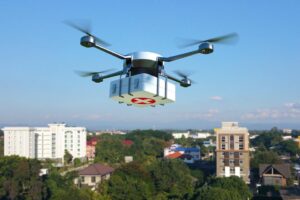
What other topic has dominated our everyday life this year more than COVID-19? The disease has not only killed more than 1.66 million in the world but also changed the way people live, work and do business. Amid the pandemic, end user entities are turning to new technologies – or new applications from existing technologies – to meet new demands and requirements. In this article, asmag.com identifies the top 2021 technology trends that are shaped by COVID and how they will be part of our new normal.
6. Remote work and cybersecurity

On a related note, COVID has sent millions of people working at home, which has proven to be an effective method to curb the spread of the disease. However, with telework on the increase, cyberattacks and hacking have also risen. According to the US National Institute of Standards and Technology, “telework and remote access technologies often need additional protection because their nature generally places them at higher exposure to external threats compared to technologies that are only accessed from inside the organization.” That said, NIST has listed several guidelines for telework security, including plan for telework-related security policies and controls; develop a telework security policy that defines telework, remote access, and BYOD requirements; ensure that remote access servers are secured effectively; and secure organization-controlled telework client devices against common threats; ensure that remote access servers are secured effectively; and secure organization-controlled telework client devices against common threats.
7. Mass screening technologies for big crowds

To combat terrorism and screen people for guns and weapons, traditional metal detectors have worked for quite some time. But with COVID-triggered social distancing guidelines, operators are looking for alternative solutions to mass-screen people at a rapid pace. In this regard, radar is one solution. One of the most significant benefits of human security radar in light of the coronavirus pandemic is that it is low contact and allows people to socially distance as they pass through the inspection zone. In contrast to traditional security checkpoints, which some of the highest risk locations for the cross-infection of diseases like COVID-19, HSR requires the minimum of contact and enables venues to get back to business securely and safely.
8. Drones and robots

During the pandemic, drones and robots are seeing their roles increase significantly amid stay-home orders and manual labor shortages. Certain hotels suiting what is security technology trends now are more and more relying on robots to clean and disinfect their facilities. In some hospitals, to avoid too much interactions between hospital staff and patients infected with COVID or other diseases, robots are deployed to deliver the much needed items for example food, drugs and other medical supplies. Finally, with some truckers and deliverers subject to stay-home orders, drones can now come in handy to deliver items to those who cannot go out to shop amid COVID. Earlier this year, (Google-owned) Wing Aviation and UPS have obtained certifications from the Federal Aviation Administration (FAA) for drone deliveries, and recently Amazon also obtained this certificate, paving way for them to create a 30-minute-or-less delivery option via Prime Air. These services are all expected to be part of our new normal, even after the pandemic finally ends.
9. Renewed interest in cold chain for vaccine deliveries

Speaking of the end of the pandemic, the rollout of the coronavirus vaccines by different manufacturers offers a glimpse of hope that finally, the end of the COVID-19 is in sight. However, the distribution of vaccine doses is no easy task. For starters, they need to be stored in an ultra-cold temperature range. Take the Pfizer-BioNTech vaccine, for example; it will arrive at a temperature between -80°C and 60°C, according to the US Centers for Disease Control. Making sure that the doses are kept in that environment from the warehouse to the end user site, then, requires advanced cold chain technologies, which are all about IoT: GPS and sensors are employed and transmit data back to the monitoring center to track and ensure that the vaccine doses are properly temperature-controlled. With mass inoculations expected for next year, cold chain will definitely be a 2021 technology trend to watch for.
10. Acceleration of industry IoT to respond to COVID

The so-called Industry 4.0 or Industrial Internet of Things (IIoT) was already taking off prior to COVID, and the pandemic will only accelerate its growth in our new normal. IIoT has to do with connecting machines with industrial sensors, which transmit data to the backend for analysis and management. With this digitization of factory operations, machines that are overheating, for example, can be alerted to a manager or team leader who may otherwise be working remotely or from home, and he can then fix the problem with fellow workers over videoconferencing or virtual reality which are also part of the IIoT scheme. From an employee safety perspective, sensors can placed throughout the factory to monitor for social distancing, and contact tracing may be possible should an employee get infected. IIoT is definitely the way to go post-pandemic.
Source: a&s Magazine



































































